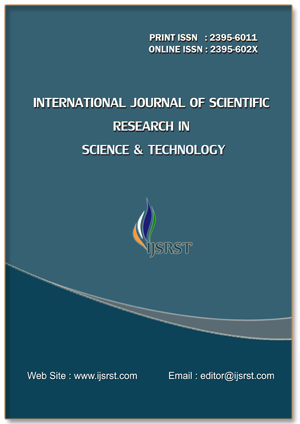Screening of Lipase-Producing Microbes for Oil Bioremediation: An Eco-Friendly Approach
DOI:
https://doi.org/10.32628/IJSRST251222639Keywords:
Lipase, Bioremediation, Enzymes, Oil PollutionAbstract
Oil pollution poses significant environmental challenges, threatening ecosystems and human health. Microbial lipases offer eco-friendly solutions for degrading lipid-based pollutants. Microbial lipases (EC 3.1.1.3) are versatile enzymes capable of catalysing lipid hydrolysis and synthesis, with significant potential for industrial and environmental applications. This study aimed to explore the bioremediation potential of microbial lipases obtained from dairy products, oil-contaminated soil and water, garage soil, and mill effluents. Lipase activity was optimized under varying pH, temperature, and incubation conditions. Optimal activity was observed at pH 6, temperatures of 37°C, and incubation time 60 min. Among the isolates, Mill Water Enzyme showed the highest specific activity (7.02 U/mg), whereas garage soil enzyme exhibited the highest bioremediation efficiency (0.0687 U/mol). Bioremediation assays using the gravimetric method showed promising results. The Mill Soil, Garage Soil, and Dairy Water Enzymes achieved 50% oil degradation from soil, whereas the Mill Water, Mill Soil, and Garage Soil Enzymes achieved 100% oil degradation from water effluent. Similarly, the Mill Water Enzyme demonstrated complete oil degradation (100%) in the dairy waste water effluent. Titrimetric estimation further underscored the effectiveness of microbial enzymes in oil breakdown, with garage soil enzyme exhibiting the highest activity (0.0687 U/mol). This study confirms the industrial and environmental relevance of microbial lipases, particularly in bioremediation.
📊 Article Downloads
References
Andualema, B., & Gessesse, A. (2012). Applications of microbial lipases in industry and medicine. Biotechnology Advances, 30(6), 1382–1395.
Akil, E. et al. (2016). Lipase advancements in industrial applications. Enzyme Research Journal, 24(3), 45–53.
Bhandari, P., et al. (2021). Role of microbial enzymes in bioremediation: A sustainable approach. Environmental Research, 195, 110815.
Dussan, K. J., et al. (2010). Innovations in biotechnological applications of microbial lipases. Journal of Biocatalysis, 7(4), 310–320.
Gunjal, P. R., et al. (2021). Microbial lipases: Industrial applications and potential. Applied Environmental Microbiology, 87(3), 465–474.
Hassan, S., et al. (2018). The role of microbial lipases in wastewater treatment and tannery effluent management. Journal of Environmental Science & Technology, 42(9), 521–534.
Hasan, F., Shah, A. A., & Hameed, A. (2009). Industrial applications of microbial lipases. Biotechnology Advances, 27(6), 782–798.
Jaeger, K. E., & Eggert, T. (2002). Lipases for biotechnology. Current Opinion in Biotechnology, 13(4), 390–397.
Kumar, S., et al. (2012). Detection of lipase-producing bacteria using rhodamine olive oil agar medium. Journal of Microbial Methods, 89(4), 270–274.
Lee, D., et al. (2015). Cost-effective scaling up of microbial lipase production. Industrial Biotechnology Advances, 31(4), 55–61.
Melani, S. S., et al. (2020). Lipase applications in pharmaceuticals and biodiesel synthesis. Biotechnology Trends, 13(5), 340–350.
Oluwaseye, A. A., et al. (2020). Screening methods for microbial lipase activity detection. Microbial Science Advances, 36(9), 127–136.
Ramnath, L., et al. (2017). Colorimetric detection techniques for microbial lipases. Journal of Microbial Techniques, 18(4), 220–228.
Sarmah, P., et al. (2018). Bioremediation methods using lipase enzymes. Environmental Technology Reviews, 24(6), 92–100.
Sharma, R., et al. (2001). Optimization of microbial lipase production for industrial use. Biotechnology Processes, 22(3), 456–462.
Szymczak, P., et al. (2021). Applications of microbial lipases in food and leather industries. Microbial Industrial Applications, 42(8), 602–610.
Zhao, Z., et al. (2020). Environmental adaptations and enzyme production in microbes. Applied Microbial Science, 33(5), 105–115.
Downloads
Published
Issue
Section
License
Copyright (c) 2025 International Journal of Scientific Research in Science and Technology

This work is licensed under a Creative Commons Attribution 4.0 International License.
https://creativecommons.org/licenses/by/4.0




